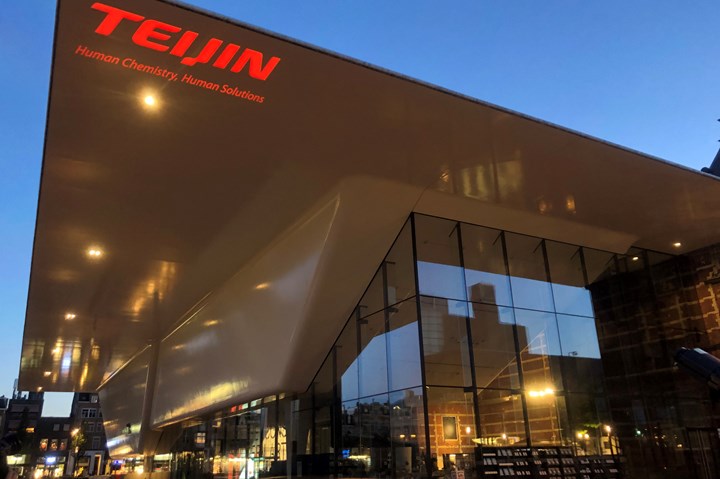Teijin-supported Stedelijk Museum Amsterdam celebrates 10 years
The modern wing’s composite-paneled façade features Teijin Twaron para-aramid fiber and Tenax carbon fiber for a striking, seamless design.
Teijin Ltd. (Tokyo, Japan) announces that the modern wing of the Stedelijk Museum Amsterdam, featuring what the company claims is the world’s largest composite facade made with Teijin Group’s Twaron para-aramid fiber and Tenax carbon fiber, is celebrating its 10th anniversary this year. Teijin, which operates group companies in Europe under a regional headquarters located in Amsterdam, has been sponsoring the museum since 2007 as a cultural initiative inspired by the company’s philosophy of growing and evolving in harmony with society.
Designed by Benthem Crouwel Architects, the building soon became widely known as the “bathtub,” due to its distinctive shape. It features a smooth, seamless and shiny white facade and canopy incorporating 185 composite panels made with the Teijin Group’s advanced fiber materials. Measuring 100 meters x 25 meters and seemingly floating in the air, the building’s façade is a striking contrast to the museum’s original neo-renaissance building. The new, sustainable construction keeps out rain and dirt, is practically maintenance-free and its surface lends itself to projections of, among other things, video art, which brings citizens and visitors from all over the world.
It was known that very large building components would be required to produce the facade, but this presented potential problems due to the thermal expansion and distortion of the components over time. Conventional building materials were rejected, but after a number of verifications were performed the builders selected resin-coated sheets made with a combination of Twaron and Tenax, which reportedly minimize the effects of thermal expansion thanks to the fibers’ strength and low coefficients of thermal expansion (CTE).
Twaron para-aramid fiber produced by Netherlands-based Teijin Aramid B.V. and Tenax carbon fiber produced by Teijin Carbon Europe GmbH in Germany were combined with vinyl ester resin in composite laminates, forming the outer skins of a composite sandwich construction with a core of PIR foam. Whereas resin expands as the temperature rises, both Twaron and Tenax fibers contract, ensuring minimal expansion of the panels to realize a seamless look while creating significant structural stability.
Related Content
-
DITF Denkendorf advances sustainable carbon fibers, oxide fibers for CMC and more
The German Institutes of Textile and Fiber Research are targeting more sustainable carbon fiber via low-pressure stabilization and bio-based precursors, and working with Saint-Gobain to commercialize oxide ceramic fibers for CMC.
-
Melker of Sweden accomplishes sea kayak with 100% sustainable composite construction
Built with ampliTex flax fabrics, a solid cork core and plant-based resins, the company’s Värmdö kayak model highlights an environmentally conscious design for paddlers of all levels.
-
JEC World 2024 highlights: Glass fiber recycling, biocomposites and more
CW technical editor Hannah Mason discusses trends seen at this year’s JEC World trade show, including sustainability-focused technologies and commitments, the Paris Olympics amongst other topics.














